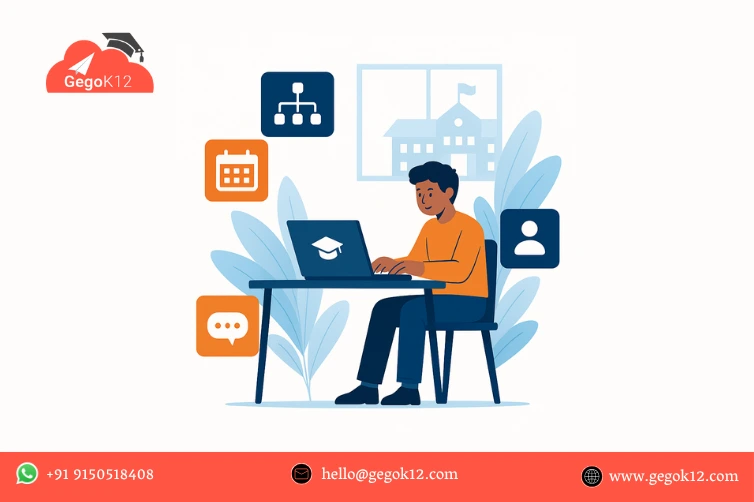Introduction: K‑12 Schools Are Ready for Change
Across the globe, K‑12 schools are seeking smarter ways to operate—both in classrooms and in administrative offices. Traditional methods of managing students, teachers, and academic processes are no longer sustainable in a fast-paced, tech-driven world. At the same time, budget pressures make it difficult to justify expensive software systems.
K‑12 schools with open source ERP solutions – a practical, future-forward way to modernize K‑12 education management without compromising on cost, flexibility, or performance.
The Challenge: Outdated Tools for a Dynamic Educational System
Many K‑12 schools still rely on spreadsheets, paper-based records, or fragmented software systems to handle essential tasks like attendance, grading, fee collection, or parent communication. These methods are:
- Prone to errors and delays
- Time-consuming for teachers and administrators
- Difficult to scale as enrollment grows
And commercial ERPs, though robust, often demand hefty licensing fees, making them inaccessible for small to mid-sized institutions.
What Are Open Source ERP Solutions for K‑12?
Open source ERP systems are software platforms that manage school operations while offering the source code for public use, modification, and distribution. Specifically tailored for K‑12 education, these tools typically include modules such as:
- Student records and attendance
- Exam and grading systems
- Timetable management
- Staff and payroll tracking
- Parent portals and communication tools
- Admissions and fee collection
Schools can install these systems on their own servers or preferred cloud services, retaining full control over features and data.
Why They Matter for the Future
Affordability
Open source ERP solutions eliminate recurring licensing fees and allow schools to allocate budgets to training, infrastructure, or student resources instead.
Adaptability
Schools can modify modules to reflect specific academic requirements, grading schemes, or language preferences.
Data Privacy & Ownership
With self-hosted deployment, schools don’t have to rely on third-party vendors to protect student and staff data.
Scalability
As schools grow, open source platforms can scale with them—supporting more students, branches, and integrations over time.
Community Support
Backed by developers, educators, and contributors worldwide, most open source ERP projects benefit from active forums, GitHub repositories, and user feedback.
How to Implement Open Source ERP for Long-Term Impact
- Identify Core Administrative Needs Review current workflows across academics, finance, HR, and communication.
- Select a Well-Maintained Open Source Platform Look for options with strong documentation and an active community.
- Involve Stakeholders Early Get input from teachers, admins, and IT teams before finalizing modules.
- Customize for Curriculum Alignment Modify academic modules to match national or regional standards.
- Train & Transition Gradually Roll out the ERP in phases, with proper onboarding for users.
GegoK12: Enabling the Next Era of K‑12 Schooling
GegoK12 is an open source ERP system designed to empower K‑12 schools with practical, modular, and affordable solutions:
- Built on Laravel for speed and reliability
- Modules for admissions, attendance, exams, fees, and more
- Responsive UI for desktop and mobile
- Customizable and well-documented
- Self-hosted for full control and privacy
It’s more than software—it’s a platform for future-ready school operations.
Frequently Asked Questions (FAQ)
1. Can K‑12 schools with open source ERP systems handle large schools?
Yes. Many are designed with scalability and modularity in mind.
2. How long does implementation take?
It depends on the modules chosen and the school’s IT readiness. A phased rollout over 1–3 months is common.
3. Are updates and security patches included?
Yes, through the community or vendor-provided repositories.
4. Is GegoK12 suitable for schools with limited IT staff?
Yes. It’s lightweight, has simple installation steps, and can be supported by freelance developers if needed.
5. Can we add new features over time?
Absolutely. With full access to the source code, new modules or integrations can be built as needed.
Build Smarter, Not Costlier
Reimagining school operations doesn’t have to come with a premium price tag. K‑12 schools with open source ERP solutions, can invest in systems that grow with them, respond to their unique needs, and uphold values of transparency and community-driven progress.
👉 Begin your transformation with GegoK12—an open source platform for building a better future in K‑12 education.

